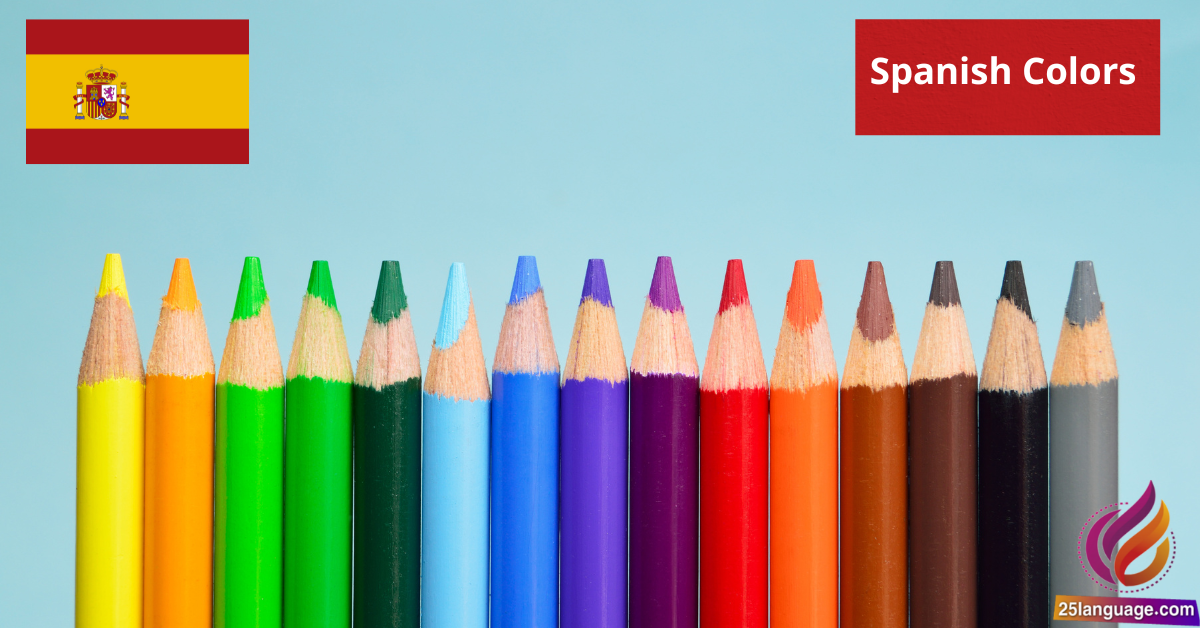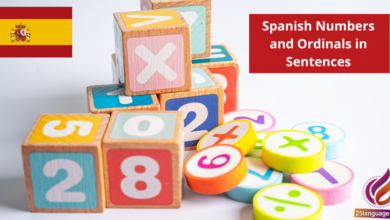Spanish Colors and How to Use Them as Adjectives

imagine walking through a vibrant market in Spain, where colorful fruits adn lively textiles surround you.Understanding Spanish colors not only enriches your vocabulary but also allows you to paint vivid pictures with your words. In this lesson, we’ll explore how to use colors as adjectives to describe people, places, and things. By the end, you’ll be able to add a splash of color to your conversations, bringing your Spanish to life!
Exploring the Vibrant World of Spanish Colors
In Spanish, colors are not only descriptive but also essential for communication. To use colors effectively, learners must understand how to agree them with nouns in gender and number.Spanish nouns are either masculine or feminine, wich affects the form of the color adjective. For example, “red” is “rojo” for masculine nouns and “roja” for feminine nouns. When referring to multiple items, the color agreement also changes to plural forms: “rojos” for masculine plural and “rojas” for feminine plural. Here are some examples:
- El coche es rojo. (The car is red.)
- La casa es roja. (The house is red.)
- Los coches son rojos. (The cars are red.)
- Las casas son rojas. (The houses are red.)
Besides basic colors, learners should also be familiar with how to use color expressions to enrich their vocabulary. Many Spanish colors can be combined with descriptive phrases to convey more vivid imagery. As a notable example, “light blue” in Spanish is “azul claro” and “dark green” is “verde oscuro.” Pay attention to the structure where the color comes after the adjective in these combinations. Below is a table summarizing some common colors along with their english translations:
| Spanish Color | Gender/Number | English Translation |
|---|---|---|
| rojo | masculine singular | red |
| roja | feminine singular | red |
| azul | neutral | blue |
| verde | neutral | green |
| amarillo | masculine singular | yellow |
| morado | masculine singular | purple |
| azul claro | neutral | light blue |
| verde oscuro | neutral | dark green |
Mastering Colors in Spanish: A Guide to Descriptive Adjectives
In Spanish, colors are described using adjectives, which must agree in gender and number with the nouns they modify. This means that if you are describing a feminine singular noun, the color adjective must also be in its feminine singular form.Such as:
- El coche rojo (The red car – masculine singular)
- La casa roja (The red house – feminine singular)
- Los coches rojos (The red cars – masculine plural)
- Las casas rojas (the red houses – feminine plural)
To form the plural of most color adjectives, simply add an -s to the end of the word if the noun is plural. Though, some colors have irregular forms. Furthermore, certain colors also have masculine and feminine forms, such as blanco (white) and blanca (white – feminine). Here’s a table summarizing some common colors and their respective forms:
| color (Spanish) | Masculine Singular | feminine Singular | Masculine Plural | Feminine Plural |
|---|---|---|---|---|
| Rojo | Rojo | Roja | Rojos | Rojas |
| Blanco | Blanco | Blanca | Blancos | Blancas |
| Verde | Verde | Verde | Verdes | Verdes |
| Azul | Azul | Azul | Azules | Azules |
Bringing Colors to Life: Practical Ways to Use Adjectives in Spanish
In Spanish, adjectives must agree in gender and number with the nouns they describe. This means that if the noun is feminine, the adjective takes a feminine form, and similarly for plural nouns. For example, the word “rojo” (red) changes according to the noun’s gender and number:
- El coche rojo (The red car – masculine singular)
- La casa roja (The red house – feminine singular)
- Los coches rojos (The red cars – masculine plural)
- las casas rojas (The red houses – feminine plural)
Additionally, certain adjectives in Spanish can also function to express a subjective viewpoint or an inherent characteristic.the placement of adjectives can change the meaning; for instance, “pobre” placed before a noun implies sympathy, while placed after it indicates financial status:
- El pobre hombre (The unfortunate man)
- El hombre pobre (The man who is financially poor)
When using descriptive adjectives, it’s importent to remember that Spanish adjectives typically follow the noun, but there are exceptions. Below is a simple table that summarizes some common Spanish adjectives,their gender-specific forms,and English translations:
| Spanish Adjective | Masculine Singular | Feminine Singular | Masculine Plural | Feminine Plural | English Translation |
|---|---|---|---|---|---|
| alto | alto | alta | altos | altas | tall |
| bajo | bajo | baja | bajos | bajas | short |
| bonito | bonito | bonita | bonitos | bonitas | pretty |
| inteligente | inteligente | inteligente | inteligentes | inteligentes | intelligent |
From Red to Blue: The Essential Role of Colors in Descriptive Language
Colors play a crucial role in enriching descriptive language,allowing speakers to convey emotions,settings,and characteristics with vivid imagery. In Spanish, the names of colors are commonly adjectives, and they must agree in gender and number with the nouns they modify.As an example, the word for “red” in Spanish is rojo for masculine nouns and roja for feminine nouns.In the sentence El coche es rojo (The car is red), “coche” is masculine, so we use “rojo.” Though, for feminine nouns like “mesa” (table), one would say La mesa es roja (The table is red). Here are some key points regarding color adjectives:
- Colors must agree in gender: rojo (masculine), roja (feminine).
- Colors must agree in number: rojos (plural masculine), rojas (plural feminine).
- examples: Los coches son rojos (The cars are red – masculine plural). Las mesas son rojas (The tables are red – feminine plural).
Additionally,Spanish has some unique expressions involving colors that can convey metaphorical meanings. Such as, estar verde means “to be inexperienced,” while ponerse rojo translates as “to blush” or “to become embarrassed.” The versatility of color vocabulary is immense, allowing for expressive language in everyday conversation. Some common colors and phrases include:
| Spanish Color | Meaning | English Translation |
|---|---|---|
| Negro | significa misterio o elegancia. | Black – signifies mystery or elegance. |
| Blanco | Simboliza pureza o paz. | White – symbolizes purity or peace. |
| Azul | Relacionado con la calma o la tristeza. | Blue – associated with calm or sadness. |
Closing remarks
¡Excelente trabajo hoy! Hemos recorrido un emocionante viaje a través de los colores en español y cómo utilizarlos como adjetivos para describir cosas de manera vibrante y precisa. Hemos aprendido que los colores no solo añaden belleza a nuestro lenguaje, sino que también enriquecen nuestras descripciones, permitiéndonos comunicar nuestras ideas de forma más efectiva y creativa.Recuerda que los adjetivos en español deben coincidir en género y número con los sustantivos que describen. Por ejemplo, una “casa roja” y “casas rojas.” ¡Practica usando estos colores en tus conversaciones diarias y verás cómo le dan vida a tus descripciones!
Te animo a que hagas una lista de objetos a tu alrededor y los describas utilizando los colores que hemos aprendido. No dudes en jugar con los colores en tus oraciones y así experimentar su poder. Cuanto más practiques, más natural te sentirás al usarlos en tu español diario.
Sigue adelante con tu aprendizaje. ¡Cada paso que das te acerca más a la fluidez! ¡hasta la próxima clase!





























